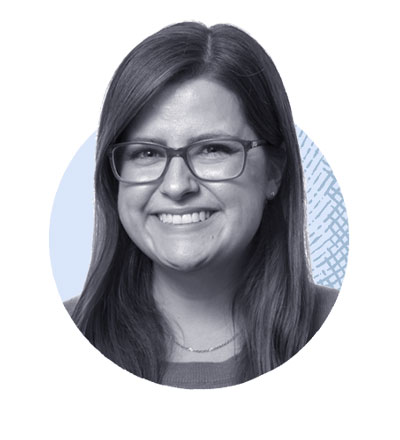Dollar Scholar Asks: What Do PPO, HMO and Other Health Plan Acronyms Mean?

This is an excerpt from Dollar Scholar, the Money newsletter where news editor Julia Glum teaches you the modern money lessons you NEED to know. Don't miss the next issue! Sign up at money.com/subscribe and join our community of 160,000+ Scholars.
In journalism school, I was always taught to avoid "alphabet soup," or the tendency to overuse acronyms in my writing. They're confusing and hard to keep track of, like a long-form version of that famous "IDK, my BFF Jill?" commercial.
One place where alphabet soup simply cannot be avoided, however, is in health insurance. It’s an absolute mess of ABCs, making a topic that already feels like it's in another language even more baffling.
Let’s try to translate them.
What are the most important health insurance acronyms, and are they relevant to me?
The main acronyms in the health care universe distinguish one type of plan from another.
PPO
PPO stands for Preferred Provider Organization. In a PPO, a health insurance carrier sets up a contract with a medical provider, creating what’s called a network. As part of the contract, the provider promises to accept specific reimbursement rates from carriers that are in the network.
Eric Kohlsdorf, the president of the National Association of Benefits and Insurance Professionals, says that with a PPO, I can still see a doctor who’s not in the network — I’ll just have to pay more out of pocket. The reimbursement is lower when I go to an out-of-network, or non-contracted, provider.
HMO
An HMO, or Health Maintenance Organization, operates in basically a closed network — they generally only reimburse visits to providers in their network. Carriers are able to ask them for bigger discounts because “there’s more of an incentive for an individual to go to [them] — if they don't, they get no benefits at all,” Kohlsdorf says.
With an HMO, I need to have a primary care physician, says Carolyn McClanahan, founder of Life Planning Partners, Inc., in Jacksonville, Florida.
A PCP — another acronym, sigh — can take care of most minor conditions; beyond that, my carrier will require a referral for me to see a specialist. And Kohlsdorf says the company will often influence who that referral is.
“The carrier is involved to say, ‘Listen, Doctor, you referred them to Julie, and Julie doesn’t participate [in our plan], so they need to go to Eric instead for that care,’” he adds. “The HMO is more involved in where people are going for care, whereas with a PPO, wherever they want to go, they can go.”
Part of what I'm paying for with a PPO is flexibility, says Jessica Paik, CEO of national accounts for UnitedHealthcare's commercial business. HMOs tend to be cheaper than PPOs, but they're more restrictive.
POS
A POS, or point-of-service plan, is a hybrid of the two previous plans. Kohlsdorf says a POS is similar to a PPO on an HMO-style contract: I’ll have a primary care provider and pay less if I go in network, but I can go out-of-network and still have some coverage if I want.
EPO
Finally, there are Exclusive Provider Organization, or EPO, plans, which Kohlsdorf says offer a limited network of doctors that are covered. (Paik points out that emergency and preventative services are exceptions — they're always covered.)
So how’s a girl to choose the type of health insurance that's best? According to McClanahan, I should begin by considering what services I’ll require in the upcoming year: “If you know you hardly ever use health care or only go [to the doctor] when you have a sore throat, an HMO should be just fine,” she says.
But if I fill a lot of prescriptions, have a medical condition or require specialized care, I may want to get a costlier plan with more wiggle room.
“Go through what your use is, what your needs are for health care, and start building this identity to determine which plan is the best,” Kohlsdorf says.
Part of this, Paik says, is figuring out whether my doctor will remain in my network and whether I can access virtual care. I should also look at premiums (what I pay every month for insurance), deductibles (how much I have to pay in a year before my insurance kicks in), copays (the fixed cost I pay for a service) and out-of-pocket maximums (the most I’ll have to pay before insurance covers 100% of my costs).
When weighing different health plans, Kohlsdorf recommends taking a look at my entire financial picture.
Would I rather have a high deductible so I can pay a low premium and free up my budget for other things? Or would it make sense to spend more every month in exchange for a low deductible? Do I have a nest egg I could tap in case I incur big medical bills? Would I like to have a health savings account or — deep exhale — HSA?
It’s an individual decision, and a tough one. If I need help understanding my choices, McClanahan recommends I consult human resources at work or seek out a navigator (a person who’s trained in guiding people through Marketplace plans offered by the federal government).
What I shouldn’t do, she says, is get so overwhelmed I decide not to skip out on health insurance entirely.
“I was an ER doctor — one broken ankle can easily cost you $20,000,” McClanahan says. “Even if you have to get a plan that has a high deductible and doesn't cover much, you should get something. You cannot wait until you're sick to get coverage.”
The bottom line
Health care is chock-full of confusing acronyms, but the main differences in the plans have to do with flexibility and cost. When considering what’s best for me, I should look at what care I think I’ll need and how much I can afford to spend on it.
More from Money:
How Should I Handle a Huge Medical Bill?
Should I Have a Health Spending Account if I’m Young, Single and (Mostly) Healthy?

